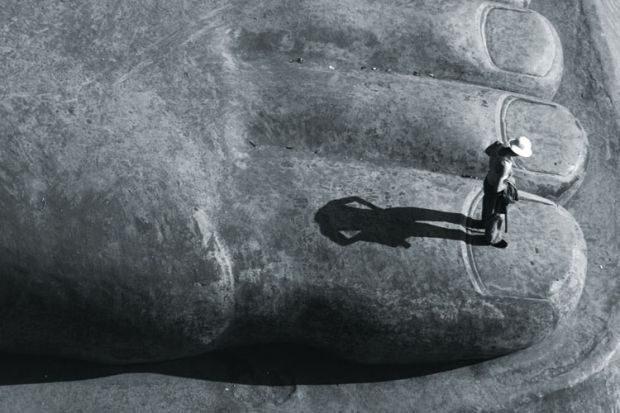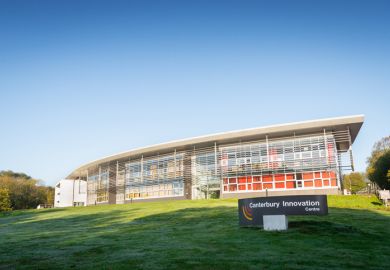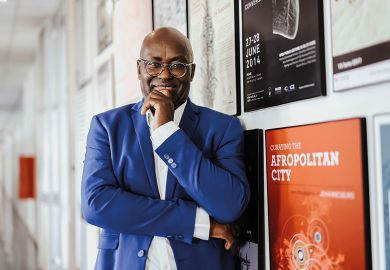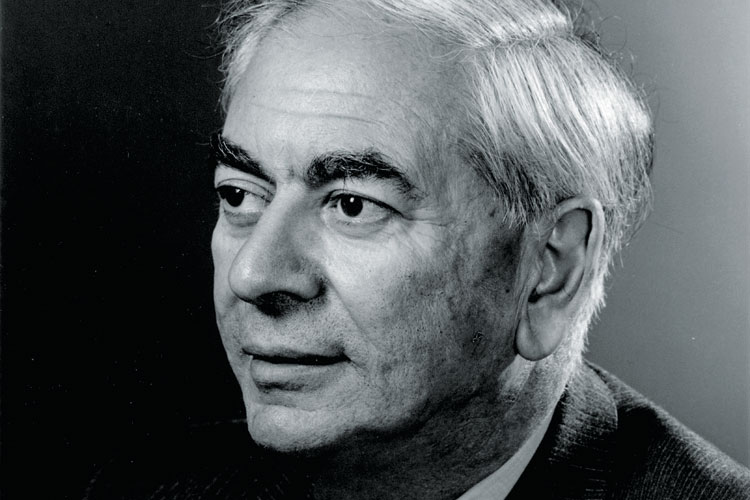
The physicist Dennis Sciama (1926-1999) is considered one of the fathers of modern cosmology. Martin Rees was one of his PhD students at the University of Cambridge in the 1960s.
The film The Theory of Everything portrays Stephen and Jane Hawking superbly. But the scientific backdrop fares less well. In particular, the film distorts the personality and style of Dennis Sciama – a crucial supporter of Stephen’s early career, and a mentor to many others. Dennis inspired his research group with his infectious enthusiasm; he followed developments in theory and observation along a broad front and was a fine judge of where the scientific opportunities lay.
This year, we are celebrating the centenary of Einstein’s theory of general relativity. But this theory was somewhat sidelined from the mainstream of physics, until the situation changed dramatically in the 1960s. This was partly because astronomers discovered neutron stars, quasars, black holes and the Big Bang – contexts in which Einstein’s theory is crucial, rather than just a tiny correction to Newtonian gravity.
But it stemmed also from advances in the theory. Here, the pioneering figure was the mathematician Roger Penrose, and Dennis – his friend and near-contemporary – persuaded him to transfer his interests to relativity. Penrose’s insights led to a deeper appreciation of what Einstein’s theory actually implied. Dennis encouraged his students (several of whom became major figures in the subject) to attend a lecture series that Penrose was giving in London.
When I enrolled as a graduate student at the University of Cambridge (two years after Stephen Hawking), it was my good luck to be allocated to Dennis. I was initially unsure whether doing astrophysics was a sensible choice – in fact, I’d seriously thought of shifting to economics. But Dennis created a “buzz” that swept me along.
My own research was guided into a less mathematical topic: trying to interpret new observations of quasars. Dennis was “plugged in” to these developments too. He encouraged his students and postdocs to interact and to learn from each other. He eagerly shared new preprints, correspondence, news of conferences, and so forth – and of course, in those pre-internet days, being on networks and mailing lists gave one a crucial head start.
In the late 1940s, Fred Hoyle, Thomas Gold and Hermann Bondi proposed the steady state cosmology, according to which the universe, although expanding, had existed in the same state from everlasting to everlasting. This theory never acquired much traction in the US (and still less in the Soviet Union). But its three advocates were vocal and articulate: and in the UK, the theory was widely publicised and discussed. Dennis extolled its aesthetic qualities in his book The Unity of the Universe (1959) – and described himself as its most fervent advocate apart from its three inventors.
The steady state theory made definite predictions that everything was the same, everywhere and at all times. But in the 1960s astronomers were, for the first time, able to probe deep enough into space (and therefore, because of light’s finite speed, far enough back into the past) to test it – and it hit the buffers. Dennis’ disappointment was deep, but short-lived. He was quickly reconciled to the Big Bang – indeed he espoused it with the enthusiasm of the newly converted.
The 1960s worldwide renaissance in relativity and “high energy astrophysics” was centred on three “schools”: those inspired by John Wheeler (Princeton University), Yakov Zeldovich (Institute for Physical Problems) – and Dennis in the UK. The interactions among them (even though those between East and West were sadly restricted) were cooperative and friendly, to an extent that isn’t always the case in fast-moving scientific fields.
Although a superb teacher, Dennis had never enjoyed his routine lecturing or supervision in Cambridge. He left in 1971 to become a senior research fellow of All Souls College, Oxford (being one of the first scientists to breach the walls of that institution). In Oxford, he again mentored an outstanding generation of young scientists. He then moved to the recently established International School for Advanced Studies (SISSA) in Trieste, Italy, where he did it all again for a third time.
He was a distinguished and original researcher, but he achieved even more as a “coach” than as a “player”.
Martin Rees is emeritus professor of cosmology and astrophysics, fellow of Trinity College, Cambridge, and astronomer royal.
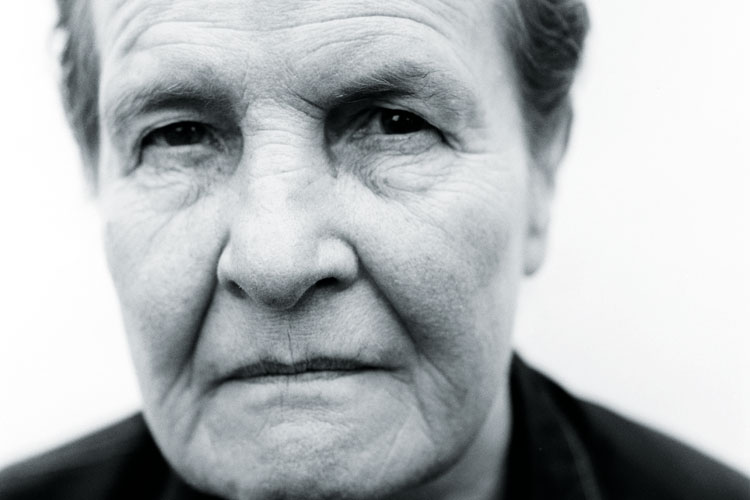
Elizabeth Anscombe (1919-2001) was a British analytic philosopher who has been described as “the undoubted giant among women philosophers”. Roger Teichmann knew her since childhood and is author of The Philosophy of Elizabeth Anscombe (2008).
Elizabeth Anscombe was one of the most important philosophers of the second half of the 20th century. Renowned for her English translations of the writings of Wittgenstein, whose friend and pupil she was, she was also a bold and original thinker in her own right. I got to know Anscombe as a child: my mother had been taught by Anscombe in the 1950s at the University of Oxford, and they kept up the friendship after they had both come to the University of Cambridge. It was by sitting in on philosophical conversations between the adults that I first caught the philosophy bug. I’ve remained infected ever since.
As I grew older, and as a friend of the family, I increasingly took part in those domestic conversations, so that when as an undergraduate I came to attend Anscombe’s lectures, the experience was familiar and at the same time strangely novel. Like Wittgenstein, she lectured more or less without notes. Again like Wittgenstein, she had both intellectual honesty and philosophical stamina, both necessary when it comes to resisting the charms of system-building. If your name is associated with some “-ism”, it can be tempting to spend the rest of your career just defending and elaborating. Anscombe was immune to this common temptation.
It was only after I had graduated that I came slowly to appreciate the depth and fecundity of Anscombe’s thought. When I was offered the editorship of a collection of essays in her honour that had got “stuck”, I gladly accepted. At my request, she sent me a photocopy of one of her unpublished essays for inclusion, written in an elegant hand on what appeared to be foolscap paper.
There are many anecdotes told about Anscombe, and many are apocryphal. But the non-apocryphal anecdotes are quite good enough. Her independence of spirit coupled with a mischievous and sometimes slightly surreal sense of humour account for many of these. Taken to a restaurant in the US during one of her visits there, she was told by the doorman that ladies in trousers were not admitted (she always wore slacks). Her host was mortified, but she insisted that he shouldn’t worry. She then removed her trousers, beneath which she wore a slip, and they gained entry to the fastidious establishment. I myself remember her at a stand-up drinks reception, when everyone was applauding some worthy speech, putting her glass on her head so as to clap since there were no tables nearby. The experiment failed.
In her lifetime, Anscombe trod on many toes, being forthright in her views and in how she expressed them. But she could be as encouraging to her students as she was infuriating to some of her colleagues. She was one of the least hierarchical people I have known. Her complete seriousness and lack of interest in anything glib or merely fashionable was obvious to anyone who knew her, and went back to her childhood and youth. An early manifestation of her independent-mindedness was her teenage announcement to her horrified parents of her conversion to Roman Catholicism. Later in Oxford, she protested against the proposal to award President Truman an honorary degree, a man she described on the occasion as having “a couple of massacres to his name” (at Hiroshima and Nagasaki). The vote went against her, unsurprisingly.
Anscombe’s philosophical range was wide. Especially influential has been what she wrote about intention, action and ethics. My own work has been hugely influenced by Anscombe; she together with Wittgenstein taught me how to tackle a philosophical problem. Her star is very much in the ascendant these days, and that can only be for the good. System-builders beware.
Roger Teichmann is a lecturer in philosophy at the University of Oxford.
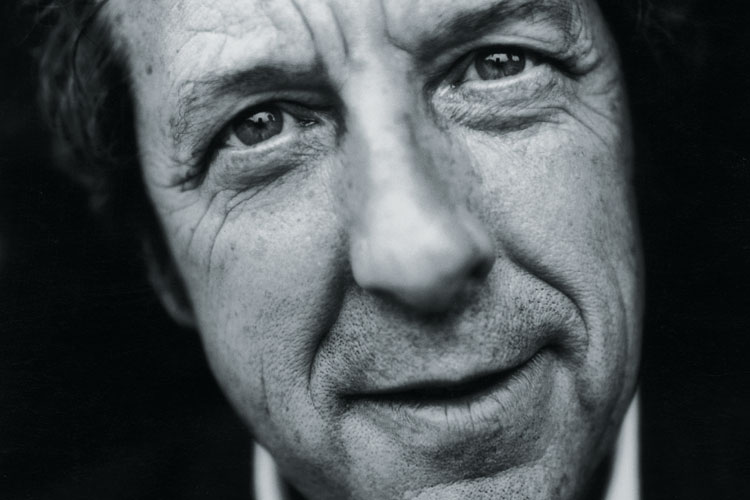
The author Malcolm Bradbury (1932-2000), best known for his comic novels about academic life, worked at the universities of Hull, Birmingham and East Anglia. Christopher Bigsby met him in 1966 when he was a lecturer at the University of Wales, Aberwystwyth.
What to say of Malcolm Bradbury, academic, comic novelist, television scriptwriter, knighted for services to literature, and my reason for teaching at the University of East Anglia, a university that he helped to shape? As soon as he moved to Norwich I decided to follow. After all, his interests were mine – creative writing and American studies. We had both studied and taught in the US. Thereafter, he would become my model, mentor and best of friends.
In 1958, Malcolm underwent major heart surgery, without which he would not have survived to the age of 50. Typically, while in hospital he wrote a comic novel, Eating People is Wrong. Having sidestepped an early death, he threw himself into life and was always writing. If invited to lecture, be a literary judge, write a piece for The New York Times, his answer would always be “yes”, unless his wife answered the phone, in which case it would always be “no”.
Over the years we would travel together for the British Council or to conferences. In Moscow, a dash across the airport ended in Malcolm, always a better writer than runner, being treated with oxygen. In Tenerife, the professor who had invited us to a conference was in hiding from terrorists, so we had to introduce and then thank ourselves profusely. He had an eye for a pretty face but also a terror of heights so that I once watched as on a mountain drive he chatted up the young female driver but then grew whiter and more silent as the altitude rose.
In the mid-1970s, he was asked to write a Play for Today set in a new university for BBC television, but having just published The History Man felt that he needed a new angle and asked me to co-write. I was very much the junior partner but had a track record of sorts. As an undergraduate I had written satirical scripts for Granada TV, admittedly for a puppet and admittedly appalling. I had also gone the usual student route of writing and performing in a revue at the Edinburgh fringe.
The play turned on a manipulative vice-chancellor (our own, we subsequently discovered, anaesthetising himself with a bottle of wine as he watched in trepidation) and a young professor of organisational studies. At the time, there was no such academic discipline. Now there is. He was in contention with that familiar Malcolm figure, the well-meaning but disordered liberal. The line of which I was most proud was, “If God had been a liberal we wouldn’t have had the Ten Commandments, we would have had the Ten Suggestions.” We then wrote a science fiction play for BBC Two, but finding ourselves in contention with the producer, adopted the pseudonym Malcolm Christopher. The Daily Mail review began, “A new play by Malcolm Christopher is always an event.”
Malcolm had the ability to write brilliantly funny novels that caught the zeitgeist. In that respect he was the twin of his friend David Lodge and, like David, was an astute and deeply intellectual critic who wrote with a clarity that I admired and aspired to. Politically conservative, he was morally and in every other way liberal, a master of so much but prone to phone his wife from the station asking her where he was supposed to be going. Pipe Smoker of the Year in 1997, he lived in fear that they would take the award away when he was finally forced to stop smoking.
When he was dying (although not aware of such) we were writing a speculative new television series set in a failing post-92 university. One of my last memories of him was his laughing at his own jokes behind the oxygen mask he was required to wear. There are worse ways to go. I miss him greatly.
Christopher Bigsby is director of the Arthur Miller Centre and professor of American studies at the University of East Anglia.
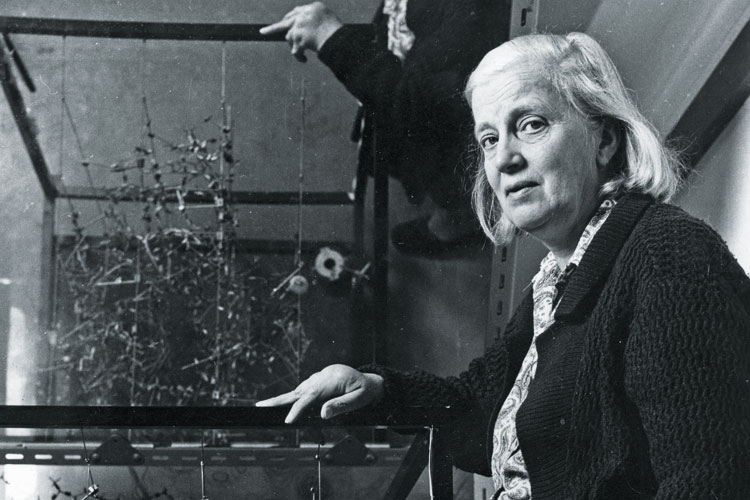
Dorothy Hodgkin (1910-1994) won the Nobel Prize in Chemistry in 1964 for her work on the structures of vitamin B12 and penicillin and remains the only British woman to have won a Nobel prize in science.
I was a very young postgraduate when I went to see Dorothy Hodgkin at the University of Oxford one summer to discuss the possibility of my doing a DPhil. I had just completed a BSc in chemistry at the University of Bristol and she was incredibly kind to accept me with a plan to work on the neutron study of insulin. Dorothy was in the process of finishing novel research on the neutron diffraction of vitamin B12 with my co-supervisor, Terry Willis of the Atomic Energy Research Establishment, Harwell. It was very unusual at that time to study such large structures by neutron diffraction, and the doctorate offered a huge but exciting challenge.
I joined Somerville College two years after she had been awarded the Nobel prize and was in complete awe, but I had no preconceptions about how it would be in Oxford working with such a famous person – I just knew that I was very lucky to be there.
Dorothy never made us feel inadequate about our lack of knowledge or inexperience in the subject and always seemed to have time for her students and members of the research group. Although I spent most of my time working on experiments at Harwell, it seemed that I had plenty of opportunity to be with Dorothy in her rooms in the chemistry department to discuss our results. She sometimes seemed to go into her own world in the middle of some discussion we were having and I wondered if I should slip away quietly and leave her to more serious scientific matters, but then she would return from her reverie and continue our conversation quite cheerfully. I don’t think I realised at the time just how many famous names in crystallography came through Oxford in those years. It was a truly enriching period of my early career and the influence of Dorothy and the Oxford labs stayed with me for ever and directed my future career.
Dorothy was a very gentle person in many ways, but she was not without enormous presence. When she felt strongly about something, she was direct in giving an opinion on matters within and beyond science. Less than two years after I had left Oxford to take up a postdoctoral position at Bristol, Dorothy became the chancellor of the University of Bristol in 1971. This was wonderful for me as I could continue to see her regularly and we could talk about science rather than university politics. When Dorothy retired formally from Oxford, she spent more time at her home in the Cotswolds. I lived nearby and became a frequent visitor to her home at Crab Mill. Later, when I moved to Durham, my route back to the South West took me past her house and I would call in regularly to see her and her family. She was by then increasingly frail but always enjoyed hearing about science and discussing the latest results.
Dorothy was extremely bright and had the ability to concentrate completely when working on a difficult problem, refusing to give up even when the task was long and complicated. Her seminal work on the structure of insulin spanned almost 35 years. It was a tour de force and ran alongside other major projects for which she was awarded the Nobel prize in 1964. She very cleverly chose to study the most important biological systems of the time, as well as tackling extremely interesting scientific challenges using the then-new technique of X-ray crystallography. One of her many skills was an incredible ability to interpret correctly complicated electron density maps that she calculated herself from the X-ray diffraction photographs, and with tremendous insight and tenacity she solved extremely important and complex molecular structures.
These are facts, but her “greatness” was so much more a part of her character and her gentle ability to inspire and encourage others. Her empathy with scientists in parts of the world where life was more complicated and difficult scientifically was amazing, and Dorothy gave a great deal of her time to help aspiring young people. Her example lives on through those who worked with her and whom she taught and inspired.
Judith Howard is professor of chemistry at Durham University.
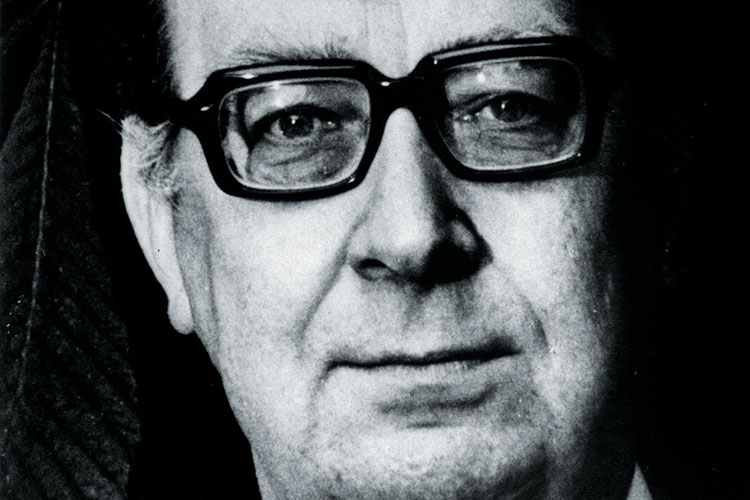
The poet Philip Larkin (1922-1985) worked as university librarian at the University of Hull for 30 years. James Booth worked in Hull’s English department from 1968 to 2011, so was for 17 years a distant colleague.
“Of course it will all be up if any of the committee has read Toads,” Larkin wrote on being invited for interview at the University of Hull in 1954: “Why should I let the toad work/Squat on my life? […]/Six days of the week it soils/With its sickening poison-/Just for paying a few bills!/That’s out of proportion.”
His luck held, and he was offered the post of librarian at the age of 32. A quarter-century after his death, in 2010, 25 brightly decorated toads adorned the streets of Hull. Today Larkin’s toad is part of Hull’s cultural “brand”. This, then, is no conventional account of academic influence. My contacts with Larkin were slight. He was a poet who never gave readings; I was an academic specialising in postcolonial literature.
Larkin saw his work in the university as the nine-to-five “day job” that gave him the time to write poems. Nevertheless, his librarianship alone would preserve his memory. He presided over two rebuildings (completed in 1961 and 1970), creating, with vice-chancellor Sir Brynmor Jones, one of the finest post-war university libraries in Britain. After his death the Library Association published a volume of essays in his honour. Larkin’s Library remained unaltered until the magnificent £28 million renewal under his successor, Richard Heseltine, which was officially opened by the Poet Laureate last month. The new Reading Room preserves the original design of lighting, and with it, for all the computer terminals, much of the atmosphere of Larkin’s time.
I arrived in Hull five years after the Robbins report, in 1968, a record year for staff appointments. With his background in the austere 1950s, the arrogance and sense of entitlement of the younger generation sharpened Larkin’s reactionary persona: “the place is full of replicas of Che Guevara & John Lennon, muttering away and plotting treason”. On the other hand, lunching in the staff refectory with my poet colleague Angela Leighton, he would envy the life of Riley we male academics must be enjoying among the female students. In 1973, The Guardian revealed that Reckitt and Colman, in which the university held a large investment, were paying black workers in their South African subsidiary below the official United Nations poverty wage. Knocking on doors, I signed up half the university staff to a petition to the university council requesting disinvestment. Asked about this in the bar over lunch, Larkin replied: “He’s performing a valuable function. It will be handy to have a complete list of all the pricks in the university.”
But beyond all this are the poems. In the 1970s, I would spend Sunday afternoons in Loten Hall of Residence, watching the sky darken over the rugby pitch and listening to the familiar music of Larkin’s voice on the vinyl records of The Less Deceived and The Whitsun Weddings: “And past the poppies bluish neutral distance/Ends the land suddenly beyond a beach/Of shapes and shingle. Here is unfenced existence:/Facing the sun, untalkative, out of reach.”
In those days, Larkin was a guilty passion; he was too parochial, not modernist enough. But new enthusiastic generations of readers have followed to prove this a mistake. His work does not “date”. By the 1990s, I was teaching a Larkin option and supervising PhDs on his work. I recall my last glimpse. A few months before he died, in 1985, I saw him standing outside Grandways supermarket holding a plastic carrier bag. He acknowledged me with a wan grimace, round-shouldered, defeated, bound for “the total emptiness forever,/The sure extinction that we travel to/And shall be lost in always”.
James Booth is a founder-member of the Philip Larkin Society and co-edits its twice-yearly journal About Larkin. He is author of Philip Larkin: Life, Art and Love (2014), which has just been published in paperback.
Register to continue
Why register?
- Registration is free and only takes a moment
- Once registered, you can read 3 articles a month
- Sign up for our newsletter
Subscribe
Or subscribe for unlimited access to:
- Unlimited access to news, views, insights & reviews
- Digital editions
- Digital access to THE’s university and college rankings analysis
Already registered or a current subscriber? Login
